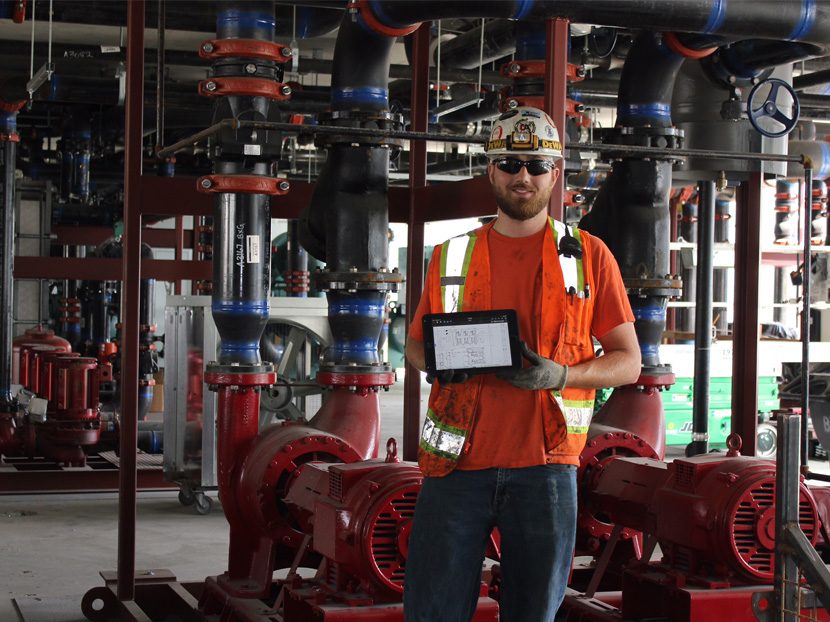The Value in Pursuing Preconstruction Planning and Standardization
PSF Mechanical reaps rewards of overhauling preconstruction philosophies and approach.

“What you’re doing, you can do better,” explains Martin Marty, application support specialist/network administrator for Seattle-based PSF Mechanical.
It sounds so simple, yet achieving “better” can be extremely difficult within the world of architecture engineering construction (AEC). While some are quick to point the finger at AEC for being behind the times in terms of technological advancement, it should be noted that AEC is also a world where the work is constant and goes on bid-by-bid — leaving little time for “trial projects” or “experimentation” that allow firms to develop and improve processes.
Because the nature of construction revolves around time or lack of it, the increasing value of preconstruction cannot be understated. The approach to the work can dictate success, and companies like PSF are cognizant of the need to streamline, maximize and standardize preconstruction practices aimed at improving lean and achieving standardization.
Continuous commitment
“We’ve established our Continuous Improvement Team (CIT) with the goal to establish more efficient processes to help us avoid jobsite pitfalls at a preconstruction level,” explains Brian Carbaugh, CIT manager at PSF Mechanical Inc. These processes include finding new ways of handling document storage and access, and creating standardized dashboards for projects and project teams, as well as establishing a cohesive training rollout at an enterprise level.
As a result of this goal, PSF’s dedicated team is taking on a variety of enterprise-wide tasks aimed at improving project performance and delivery.
Document management without SharePoint?
One of the first and most crucial overhauls for the team was the task of moving away from the firm’s main DMS, which meant discontinuing the use of SharePoint. “A big motivation for that change was the need for field access,” explains Kevin Beardsley, project executive for PSF Mechanical. “We wanted to have an easy point of access for those in the field to get information. iPad was the focus in the field, and iPads don’t play well with SharePoint, which is more geared toward the office environment.”
As an alternative, PSF is now using Bluebeam Studio to manage documents, and IT managers are tapped to lead and manage the information flow submitted by project managers.
“It makes sense,” Marty adds. “We can now rely on IT to do the hard work on the digital side for our project managers and mechanical engineers. It keeps everybody focused on what they are skilled at, and has been well-received by those who are touching all of the projects because now there is a consistency that was traditionally lacking for us on the project management side.”
Studio also allows field access to project documents via tablets in the field, achieving better communication between the office and the jobsite.
Custom dashboards offer consistency
PSF’s CIT works with IT managers to set up custom dashboards in Studio to put drawing folders that contain all aspects of what is under construction on each project in a central location, helping the project managers access what they need in an efficient manner. The dashboard also provides easy access to the construction drawings folder, which contains specific PDFs that enable access to the incoming published drawings. Any time something gets published for that job, the project managers save it within the published folder. The CIT then processes batch linking, slip-sheeting and mark-ups from that incoming published folder into the current construction drawings folder. The most current construction drawings are then aggregated and made easily viewable by leveraging Bluebeam Revu’s Sets feature.
Brian Carbaugh explains, “One transformational change for us is the concept of the most current set, or ‘single source of truth.’ Different published sets may or may not be good, or be related to the field, and that’s tough to figure out for the guys in the field who are not experts on iPad, let alone document control. That dashboard makes it intuitive for them to come in and not have to spend a lot of time navigating through folders, or on the phone. This is the starting point for everything; they can see it, go where they need to go, and get to work.”
Training rollout
“When we first started rolling it out, there were some frustrations — not because of change, but understanding it,” Beardsley admits. “We started out with the iPads in the field, and now every Thursday we have an agenda of exercises to do. It seems that every time we get out of that weekly class, the guys have gotten more excited about it and gotten better. Having everyone on the same page means you won’t have the resistance, because everyone gets it.”
While the change is exciting, PSF understands that the firm still has a long road ahead before these implementations go company-wide.
“There are still some legacy issues, but it’s working on over 300 projects. It’s not just our project information either — our field guys are also giving feedback on safety info across the board. We built a dashboard here with consistency in mind as well as ease of use. All the templates are familiar in convention,” Beardsley adds.
Mike Landers brings a unique editorial perspective to the Bluebeam team, thanks to eight years of writing for a variety of nationally published lifestyle publications, including Recoil, Hot Rod, Bound By Ink and Heavy Hitters Magazine, to name a few. Most recently, Landers handled Safety Administration and Media Coordination duties for Kiewit, gaining a wealth of knowledge into the AEC realm at the jobsite level, as well as a keen understanding of the value of project communication.




